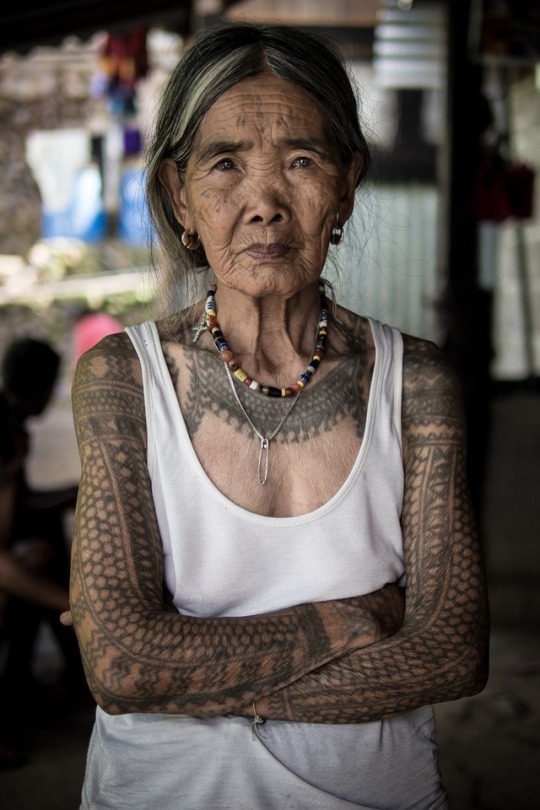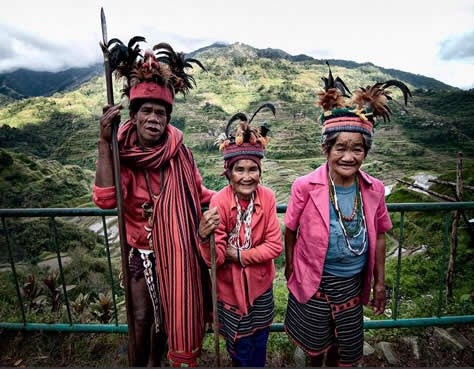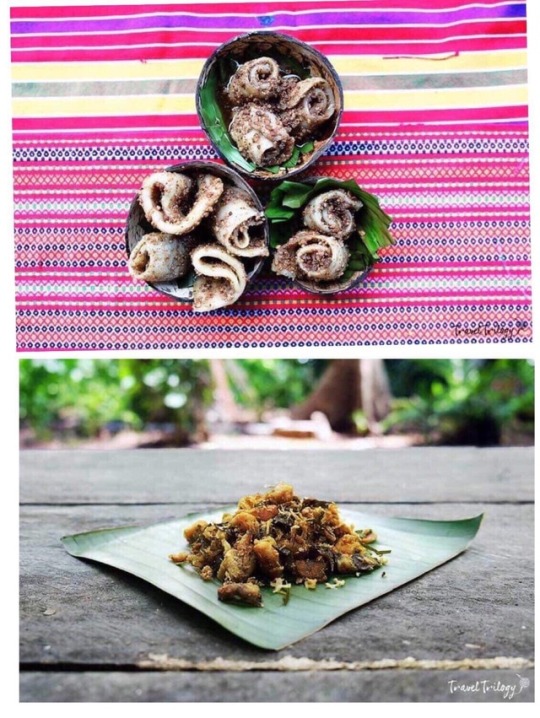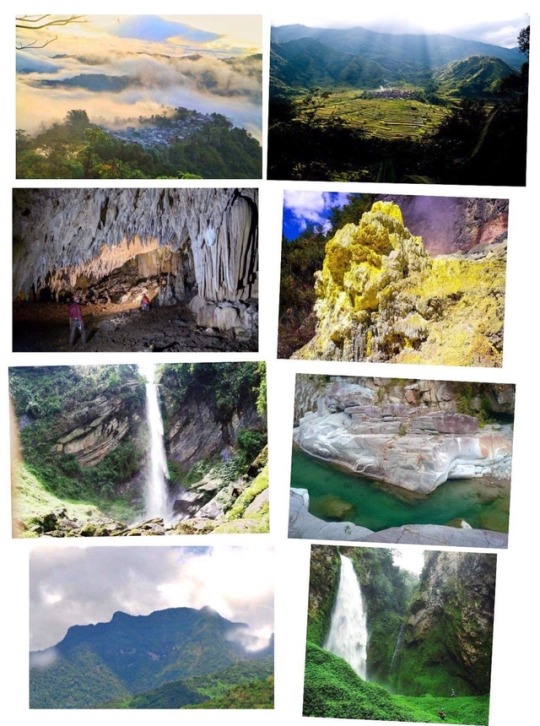Don't wanna be here? Send us removal request.
Text
I was lonely, so i called you to be with me. I felt worthless but you made me feel blessed. I love you i really do, thank you for being there when i can’t even stand for myself.
0 notes
Text
KALINGA, the land of NO RETURN.

Why it is called the land of no return? Is it true that the people who try to go there cannot come back anymore? Is that the reason? Well, if you are also curious come on and let’s find out.
Kalinga the land of no return...
Kalinga is derived from the ybanag word "Kalinga" and the gaddang word "kalinga" which means headhunters. Kalinga is the landlocked province of the philippines in Cordillera Administrative Region in Luzon. The Kalingas have numerous songs, such as the salidummay, the dong-dong-ay, the oggayam, the ading, the wasani, the paliwat, the owawi, and the dandanag. But its enduring and distinct rite is the "Bodong" that has become an institution for peace up to this day. Kalinga is classified according to bodong-holding groups or ili, or sub-tribes, namely the Tinglayans, the Lubuagans, the Tanudans, the Pasils, the Balbalans, the Pinukpuks, and the Tabuks.
We all know that Kalinga are very good dancers but we should also know that they are not just good dancers because they are also the most extensive rice farmers of the Cordillera peoples, having been blessed with some of the most suitable land for both wet and dry rice farming. Like the Ifugaos, the Kalingas are one of the extensive terrace builders in the country. The Kalingas are also skilled potters with pot making concentrated in the lower Chico River Valley. They are also excellent in basketry, loom weaving and metal works.
We are all familiar with Apo Whang-od who is also known as Maria Oggay, a filipino artist from kalinga. She is the "last and oldest" mambabatok and also a part of the butbot people, the largest ethnic group in Kalinga. Many people want to be marked by Apo Whang-od, not just the filipinos but also the people from different countries. Going to where she is, is not just riding on a vehicle and then tada you'll be there, it takes lot of courage and strength to reach her place. Maybe you're asking why there are many people who are still going there despite that her place is very far where in fact they can get tattoo in just a blink of an eye without exerting any effort. Maybe because as we've said Apo Whang-od is very significant, it is not just about how she do the tattoo, it is not just about because the one who will do your tattoo is the oldest or last mambabatok but there is deeper meaning beyond that, and that is every tattoo has a meaning and I think that is the most important thing, it is the reason that matters the most that your tattoo has its own meaning that you'll not just put it there for nothing but because of its meaning.

And here are the 10 most popular tattoos in Kalinga
1. The Compass- Guidance
2. The Scorpion- Represent struggle and resistance. And also victory in life.
3. Standing Eagle- Freedom and Strength
4. Traveller- People who long for adventures
5. Serpent Eagle- Conveys the idea of being watched over by the presence of heavenly or sky world.
6. The sun- Symbolizes life
7. Holding Hands- Unity and harmony
8. Ferns- Conveys the meaning of rebirth
9. Arrow Head- Movement or direction
10. Prayer- Symbolizes faith.
Let's get down to their culture and beliefs...
"Anito" or it is called in Kalinga as "Dawak". This is often performed by a specific old women in a certain tribe and they are believed as guided by the holy spirit when they conduct the anito,their individuality as a person can never perform this tradition without the presence of the holy spirit. When anito is conducted, the old woman is like possessed by a spirit which makes them see your future or anything that you wanted to ask them,more likely a fortune teller.
Reasons why anito is performed:
1.when a member of a family is sick and anito is like a prayer offered for healing.
2. It is performed during house blessings, a prayer offered for protection and guidance.
3. If a house is believed to be as haunted, anito is offered to send out the spirits on the house.
4. When a person would enter to Military or Pnpa, anito is offered as a protection,guidance and a blessing for the person.
5. For newly wedds anito is offered as a blessing for a family and good relationship.
The Kalinga Ethos
There are so many cultures and practices that seem unusual in the province of Kalinga. Some ethos that the local tribes molded of what they are now. It still exists and difficult to break down the beliefs despite the changes in the modern world. The old practices had been preserved and continued to pass on from one generation to another.
Bain
It was interpreted as “feeling shame.” The act of showing respect to other people as a fellow human being. It has a similar meaning to the virtue espoused by the saying of Confucius: “Do not do unto others if you would not like others to do unto you.”
Ngilin
It is strict adherence to taboos regarding social and economic activities. It also involves compliance with certain rituals to protect oneself and the members of the family from illness or harm. It dictates avoidance to what is offensive to “kabunyan” or Kalinga god to one’s own kind. “Mangngilin ka” means avoid doing evil is a common advice of the elders.
Paniyaw
The Kalinga people believe in a god called “kabunyan” who is the creator of all things and the master of life and death. “Mampaniyao” is the restriction on oneself acts looked upon as degrading, immoral and punishable by the mighty “kabunyan.” The Klaingas strongly abhor wicked acts such as “Ba-ug” (the killing of a stranger in the village where he has been given food to eat or water to drink).
Aawao
It is a very degrading and shameful actuation of a person. “Akaw” or theft leaves are more or less permanent stigma on the personality of the culprit and upon the repulsion of his family. A thief who stole animals such as pigs, carabaos or dogs will have bad luck and can never have it in the future. Most of the crops will never be of good quality.
Let’s get down to their clothing that makes them beautiful and powerful.
Kalinga is an indigenous cultural community who lives on the eastern side of the cordillera mountain range. They are also called as the "Peacocks of the North" because of the elaboration of their dress and also about their tattoos. One of their dress which they use is called "tapis". The tapis is a rectangular cloth that is worn as a wraparound skirt by kalinga women. Woven using backstrap bodytension looms and embroidered with patterns drawn from nature. The tapis also reflects the beautifully rugged mountain terrain of the kalinga environment. The shells and mother-of-pearls platelets which can be found in the tapis symbolizes wealth and prestige in this landlocked region of the philippines.

The Kalinga are called the “peacocks of the north”
because of their attention to appearance and dressing.
“Kalinga” means enemy, a name that the bordering inhabitants
The name stuck and became accepted by the natives themselves.
BONTOC-They are the people who live in the mountainous areas of Benguet, Ifugao, Mountain Province and Kalinga-Apayao.
The tribe’s traditional clothing leaves males and females bare above the waist.
But because of modern influence, younger members of the tribe wear trousers,
shirts, dresses and shoes that lowland Filipinos usually wear

And let’s bit also forget the delicacies of kalinga that will make you crave because of its deliciousness.
Kalingas wowed us with their famed “inandila”. It is so famous that the heritage village of Naneng in Tabuk celebrates it with a festival.Inandila” is the “palitaw” in other parts of the Philippines. But theirs is longer, thicker & shaped like a tongue. Instead of grated coconut toppings, their version comes with “latik” or coco caramel & crushed nuts.
But we did taste a chicken dish called “sinilian” or “pinalatan” sans the too brutal preparation. It came with pomelo leaves that added fragrance & red chili for that slight kick in the palate.

The usual culinary usage of it among the Kalinga-Apayao people is “sinursur”. It is particularly called “inalsa” by the Isnegs.This dish traditionally uses “kiwat” or catfish with “ungal” or banana stalk along with “ot-an” shellfish. It is customarily prepped only with chili, garlic & onions cooked on a low flame inside a bamboo tube. But modern-day “sinursur” uses other seasonings to appeal to the complex tastes of the new generation.
Kalinga’s “binungor”. It is a mix of stringbeans, squash, bitter gourd, eggplant, young jackfruit, kidney beans & bamboo shoots all medium boiled in coconut milk. But the star ingredients of “binungor” are “tenggang-daga” or jelly fungus & “ot-an”, a succulent river shellfish. It is usually served as an appetizer with a dash of red chili.

Kalinga is also well-know becausw of its nature’s beauty that will leave everyone of us in awe. Come on, together let’s discover the beauty wrapped in mystery.
Binasalan Falls (Pasil), Kalinga
This is one of the increasingly-popular tourist spots in Kalinga. Its waterfall emanates from the dense mossy forests of Mt. Binuluan. It cascades for more than 30 meters on a very deep pool. Swimming on the pool can be quite dangerous due to its strong and churning current. Summer then would be the best time to take a dip. Verdant vegetation of shrubs, mosses, and grasses surround its base. To get here, one needs to hike for at least an hour from the road. Literally, one needs to climb over steep trails and jump across boulders before finally catching sight of the falls.
Sulfur Hills (Pasil)
These are located on the lower slopes of Mt. Binuluan. To get here, you need to trek on hunter’s trails for hours. You will be passing across pine and mossy forests. Expect the thrills and challenges frequently encountered when on forested terrains. But the bizarre sight of these sulfur hills would definitely make up the difficulty in getting here.
Buaya Caves (Balbalan), Kalinga
These underrated caves feature various stalactite and stalagmite rock formations. There are beautiful chambers inside, reminiscent of a cathedral’s domes and spires. To get deeper inside the cave, one needs to rappel, climb on rocks, and wade across pools. Yes, there’s a small brook inside. There are also waterfalls. On some parts of the cave, you would feel like you are in golden chamber. The caves are interconnected from each other and form a chain covering the whole mountain slope. Surely, these could be the next big hit after Sagada. But proper management practices need to be developed and strictly implemented.
Lubo and Mangali Rice Terraces (Tanudan)
From the road, these terraces look like circular cascades. They surround the village of Lubo. The Tanudan river passes alongside these terraces. On a personal note, these are among the most picturesque tourist spots of Kalinga. Towering mountains provide a dramatic background of these terraces. They also supply abundant water supply all year round. Aside from the terraces, the hospitality of the people would definitely leave you feeling blissful.
Mt. Mating-oy (Tinglayan), Kalinga
This famous landmark depicts the shape of a lady lying on its back. Legend says that the mountain is the remnant of a woman who waited for her husband to return but in vain. Dense forests cover the mountains. These feed abundant creeks and brooks as well as cascading waterfalls. To date, Mt. Mating-oy is one of the most popular tourist spots in Kalinga.
Saltan River (Balbalan)
Saltan river comes from the vast mossy forests of Balbalan. During good sunny conditions, the waters exude an emerald appearance, making it inviting for a swim. Cavernous boulders and rocks surround the river. These provide a perfect spot for diving or jumping. In addition, the river teems with endemic aquatic species such as fishes and eels. More often than not, there are being served to visitors the traditional way.
Matabor Falls (Tanudan)
Getting here requires hours of hike from the nearest barangay. Expect to trail along dense forests and rappel on ravines before finally catching sight of this majestic beauty. Leeches are a constant menace especially during the rainy months. The trail may be long and challenging but it affords one with fascinating views of the forest. The main falls of Banga-banga cascades on the face of an exposed cliff. It measures around 50 meters high.
Guinaang Village (Pasil), Kalinga
This is one of the historical tourist spots in Kalinga. During the Philippine-American War, the village served as Gen. Emilio Aguinaldo’s retreat haven. His stay, however, did not last long. The Americans continued to pursue him until he was finally caught somewhere in Isabela. Besides being historical, the village offers a rustic life in the hinterlands. The people here are kind and hospitable. Plus, it rewards one with fascinating views of rice terraces and mountains.

Kalinga is not just a land of beauty but it is also the land of legend and mystery. From their culture down to their tourist spots i'll tell you it is worth it to try. We are always fascinated by the beauty of the place but once you'll able to be there you will not just appreciate the beauty but also the personality of the people living there. Their unique culture is what makes them beautiful and powerful, but despite of being known as powerful people, kalinga proved they are also soft-hearted by offering us delicious and sweets. Their clothing is not just for nothing becuase it is represents their unity despite diversity.
Truly it is a land of no return because you'll get lost with their beautiful places,cultures and traditions. You wouldn't want to leave anymore once you see the beauty of Kalinga which makes it the land of no return.

“KALINGA the land of NO RETURN”
writers:
Dadap, Dennis Jr.
Bravo, Krista Jinky
Balatico, Janina Faye
Cabasag, Lyza
Lingayo, Chamique
Jandoc, Cathlyn Joy
1 note
·
View note